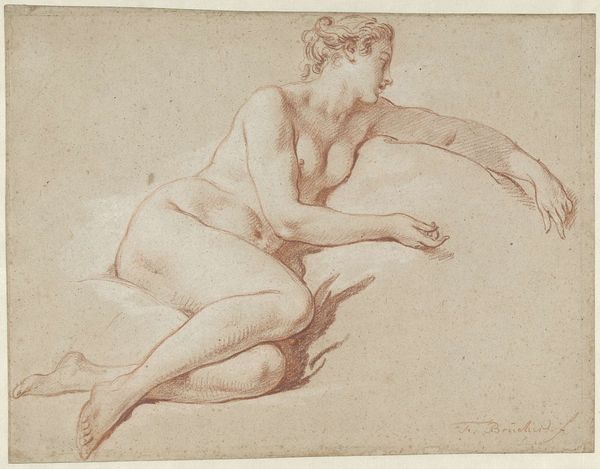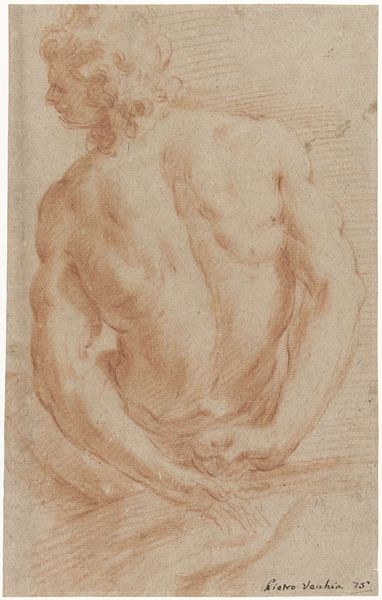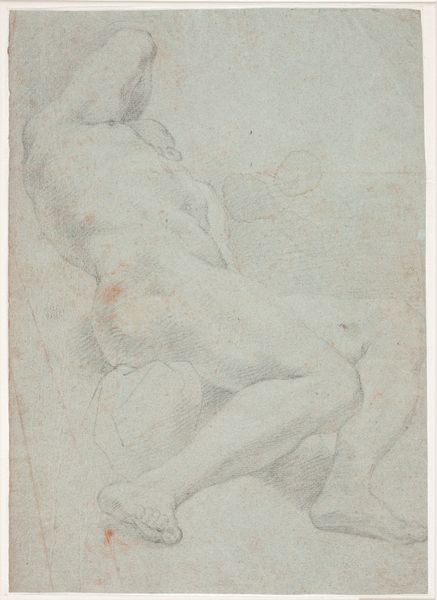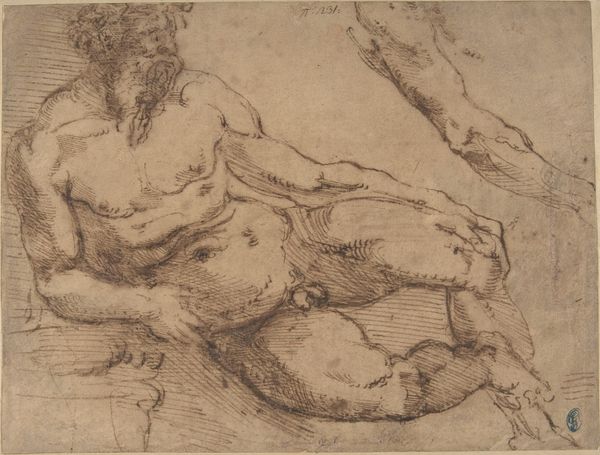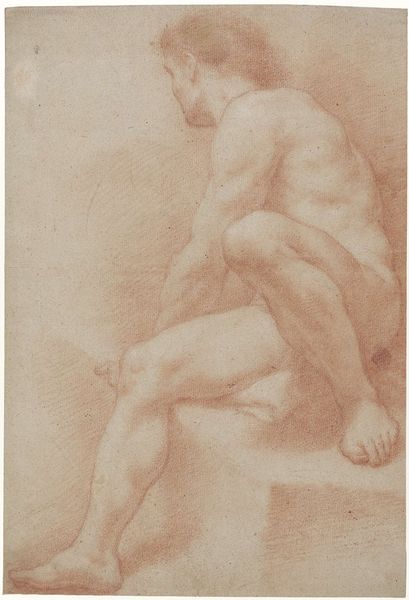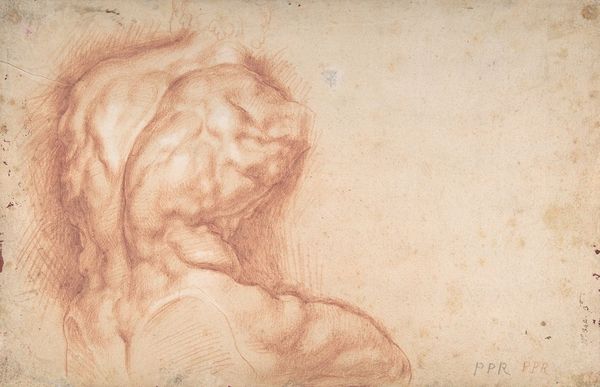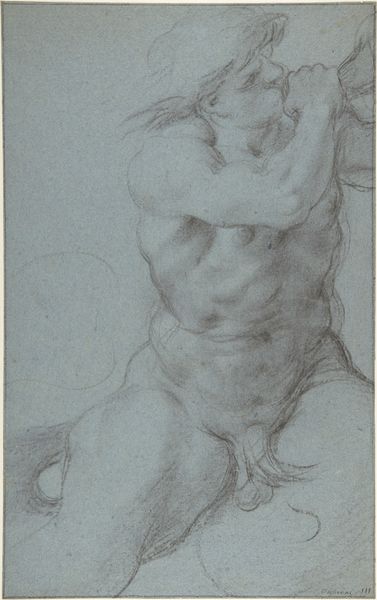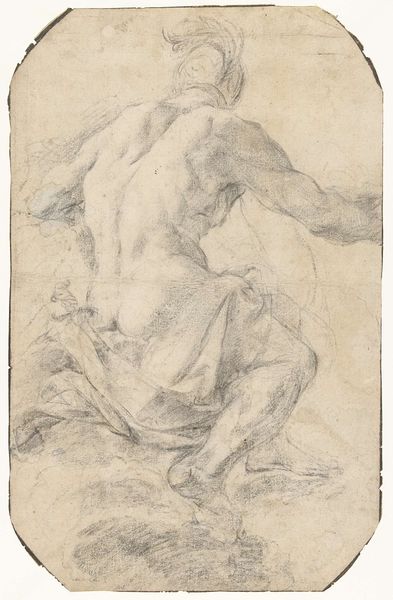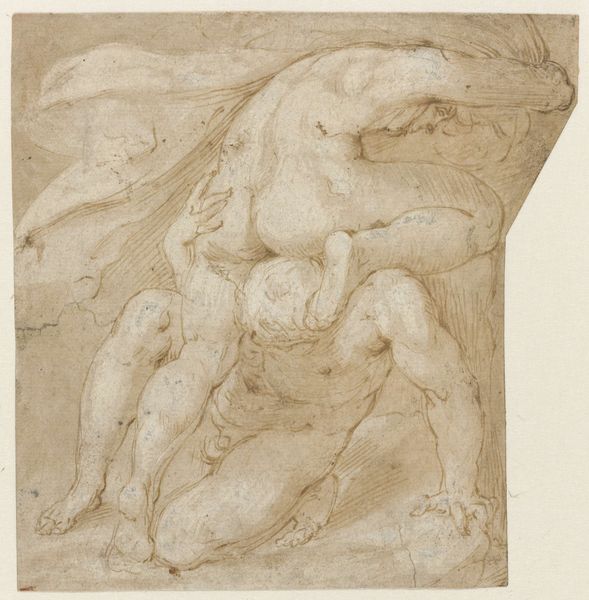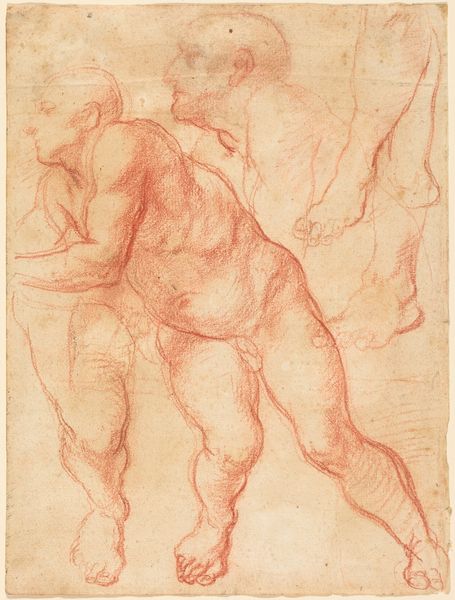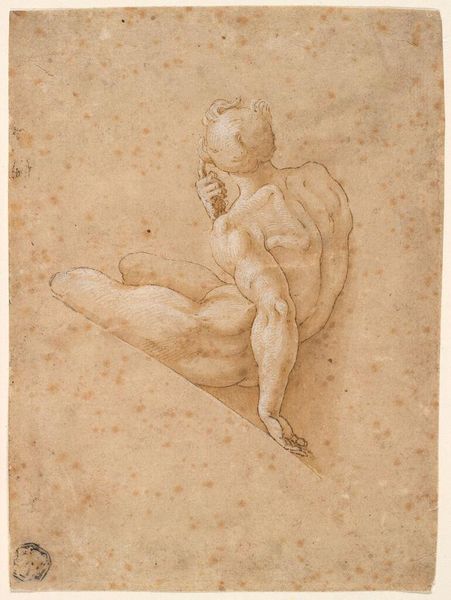
drawing, charcoal
#
drawing
#
charcoal drawing
#
figuration
#
11_renaissance
#
charcoal
#
history-painting
#
nude
Dimensions: height 142 mm, width 210 mm
Copyright: Rijks Museum: Open Domain
Editor: We’re looking at “Groep engeltjes en een liggende man,” or “Group of Little Angels and a Reclining Man,” a charcoal drawing from sometime between 1525 and 1579, by Marcello Venusti. The figure of the man is very prominent in the foreground, it feels like we're intruding in a very private scene. How do you read this piece? Curator: I see a direct connection between the artist’s labor and the final form. Consider the physicality of charcoal itself – burned wood transformed into pigment. Venusti is manipulating a material born of transformation to depict figures, perhaps undergoing their own metamorphosis, sleeping or dying even. This act of drawing, the labor of representing flesh and form with earthbound material, points to a fascinating tension. Editor: A tension? What do you mean? Curator: Think about the historical context. Renaissance art, even drawings, served specific functions. Often, they were preparatory studies. How does the labor and cost, the social function involved in the Renaissance workshop, reflect in the piece, do you think? Editor: So, you mean how this might have been practice, not necessarily the final intended form? And because charcoal is cheap, it let him try and try again? Curator: Exactly. Furthermore, we can analyze this in relation to ideas about art versus craft during the Renaissance. This pushes us to investigate artistic labor, the materials and production, and their inherent value in 16th-century Italy. Editor: I never considered the economics of art materials back then. It's helpful to realize how the choice of charcoal impacts our interpretation. Curator: Precisely. By focusing on the materiality, we get a grounded view that moves beyond simply the classical subject. Editor: Thanks, I appreciate learning a new way of thinking about how an artist’s material affects my reading of the piece.
Comments
No comments
Be the first to comment and join the conversation on the ultimate creative platform.
